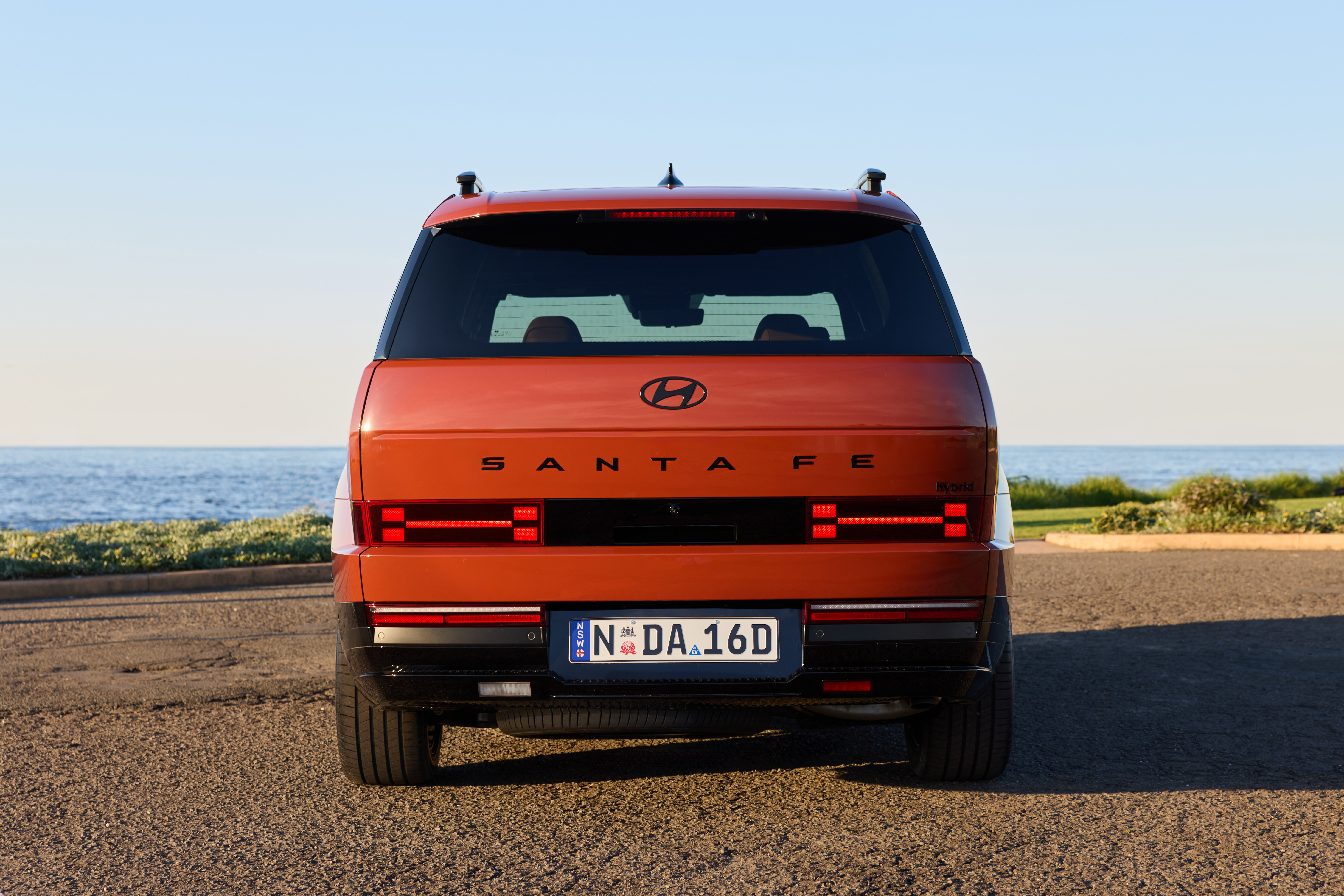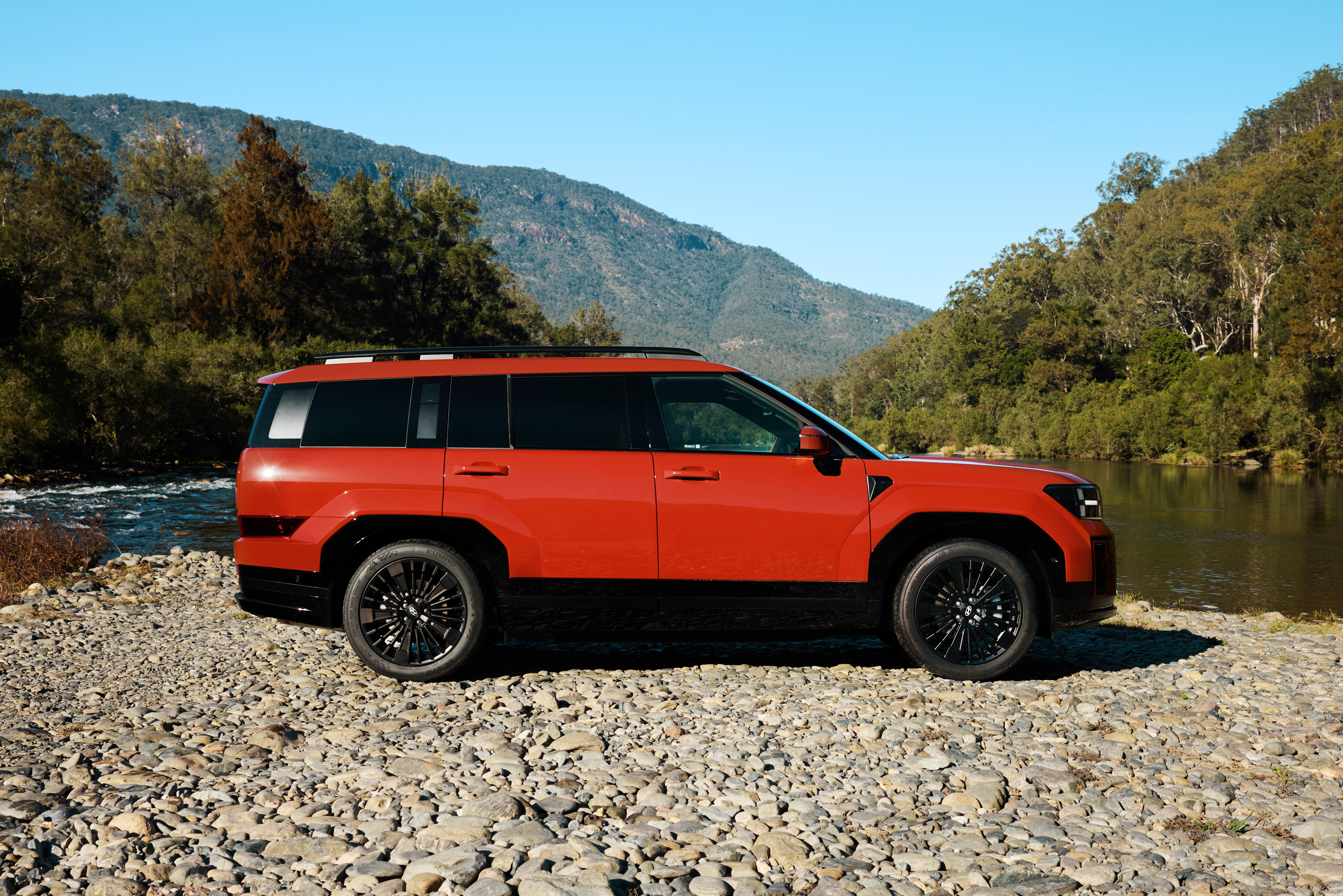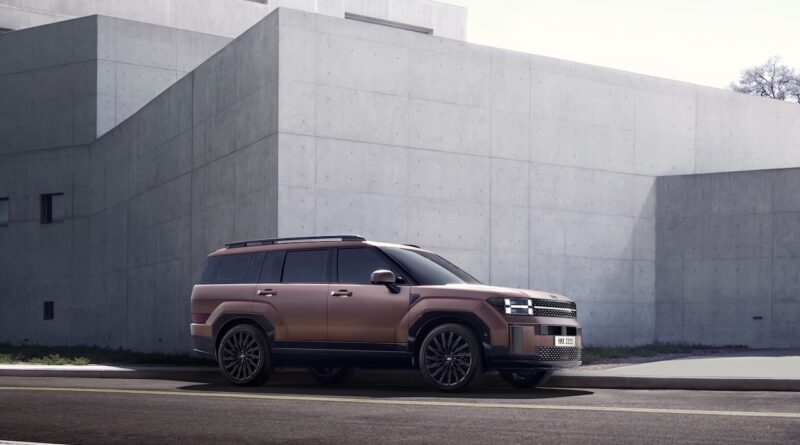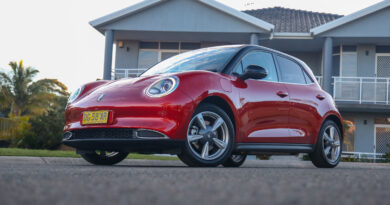2024 Hyundai Santa Fe HEV review: Can this boxy SUV carry Hyundai to new heights of luxury?
If imitation truly is the sincerest form of flattery, then there must be a glow of awkward pride visible from space emanating from the Land Rover design studios at present as Hyundai’s Santa Fe takes to the world’s roads.
Other than taking out billboards that say “We love Land Rovers designers, we think they’re the best” it’s hard to imagine Hyundai making a more dedicated effort to flatter the hell out of the folks in Solihull, UK, than throwing away every single design cue for the old Santa Fe and replacing everything with the look of Land Rover.
And it’s not just the hulking, squared-off, bulky yet brutally handsome exterior of the new Santa Fe, either, there’s a distinct sense that this large SUV – now also a HEV with no diesel or V6 engine options available so far – is trying to ape the premium off-roading brand in the interior as well.

Particularly in the up-spec Calligraphy models, the Santa Fe reeks of Range Rover classiness, right down to the steering wheel boss design, which apes a Range Rover Sport of old.
On the one hand, it’s hard not to admire the bravery of Hyundai in so totally reinventing its biggest vehicle, but on the other, it’s hard not to be a little critical of them for not coming up with a new design of their own. Still, if you’re going to copy someone who builds large SUVs, they’ve picked a good brand to go after.
And they can claim that they’ve made it obvious the Santa Fe is a Hyundai by adding big, hard to miss H-shaped DRL logos in the front and rear lights, yet another design feature that divides opinion (I’ll grant the critics that it does look awful from directly behind).
So, is the new Hyundai Santa Fe HEV has good as it looks (and to be fair, some people really hate the new look, so that might not be hard), and is the hybrid system, with its four-cylinder engine, up to the task of pushing a two-tonne truck around?
PRICE AND FEATURES
I don’t like to know what cars cost until I’ve given them back and I was genuinely shocked and impressed to learn that the range-topping Calligraphy seven-seat AWD variant I was driving costs just $75,500, not because that’s small beer, but because it feels like a veritable bargain for this much SUV. And one so pleasant inside.
Even more impressively, the entry-level FWD eponymous version starts at just $55,500 (you can also choose between six and seven-seat set ups). All models bar that entry bargain are properly AWD, but you can option it for $3000 even on that one.
Even at entry level you get 20-inch alloy wheels, LED headlights and DRLs, two lush 12.3-inch screens, dual-zone climate control, wireless charging for one phone, an electric tailgate, 10-way powered driver’s seat, a leather steering wheel and rear privacy glass.
Safety stuff includes AEB, lane-keep assist, lane-following assist, adaptive cruise control, blind-spot monitoring, rear cross-traffic alert and speed sign recognition. And yes, that means it beeps at you all the dang time and will drive you bonkers.
Step up to the mid-range Elite and you score a Bose sound system, leather trim, dual wireless chargers and remote smart park assist. My Calligraphy adds a glass sunroof, head-up display, lovely Nappa leather interior and the strangely now necessary UV-C sterilisation tray, plus a long list of other things.
Under all that bonnet you’ll find not the big engine you’d expect but a mere 1.6-litre, turbocharged four-cylinder petrol unit attached to a small electric motor, and a battery pack, which provides, all up 172kW and 367Nm, which is sent to the road thorough a proper, old-school and all the better for not being a CVT six-speed automatic.
Nerds might want to know that you’re getting 132kW from the petrol engine at a heady 5600rpm (it does not sound exciting at those revs), plus 44kW from the electric system which somehow adds up to 172kW.
The electric motor and battery are more useful in the torque department, bringing 264Nm, which, when added to the engine’s 265Nm, equals the 367Nm that is tasked with pulling all this vehicle, and its weighty interior bits, up hills.
READ MORE:
The bonus of this not quite powerful enough set-up is fuel economy, of course, which is claimed to be 5.6 litres per 100km. I got a lot closer to that than I expected, in the low sevens, but then I rarely had any passengers or luggage on board.
I also chose not to drive it in Eco mode very much, because it seems to put the car in a sad mood. Sport is more interesting and more fun, but Sporty it is not.

DRIVING
As I might already have hinted, the HEV set up doesn’t make for sprightly or exciting performance, but then this is a family SUV, and more Land Rover than Range Rover Sport.
The gear box works well, though, and the whole driving experience is smooth enough and only occasionally, up hills, sounds a bit strained.
On the plus side, the Santa Fe’s ride, handling and ability to deal with bumps really is excellent, and almost European in terms of body control and cabin quietness. Again, at the price, it’s almost shocking how good it is.
Solid is probably the word that best describes the driving experience, but what it makes up for in not being exciting is how spacious, classy, comfortable and impressive the interior is.
VERDICT
The Santa Fe could very well be a game changer for Hyundai, if they can get enough of them to sell. Apparently there is already a three to six-month wait, so feverish is demand, which tends to reflect the fact that people really like the look of this new-look Land Rover with a Hyundai badge on it.
SCORE:
4 out of 5
Hyundai Santa Fe HEV Specifications
Price: From $55,500 (plus on-road costs)
Basics: SUV HEV, six or seven seats, 5 doors, FWD or AWD
Energy consumption: 5.6 litres per 100km
Engine 1.6-litre four-cylinder hybrid (172kW/367Nm)




